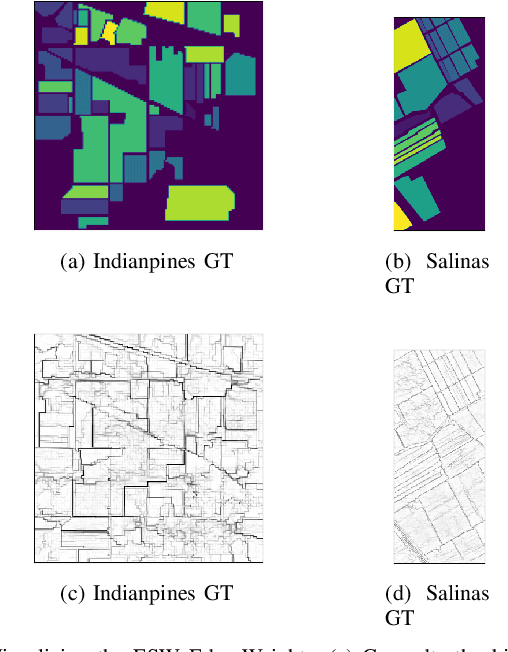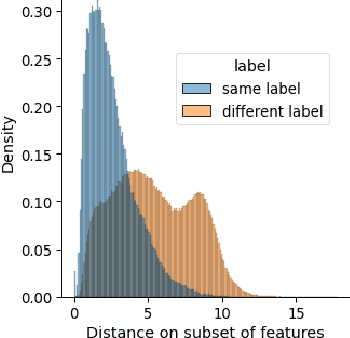ESW Edge-Weights : Ensemble Stochastic Watershed Edge-Weights for Hyperspectral Image Classification
Paper and Code
Feb 28, 2022



Hyperspectral image (HSI) classification is a topic of active research. One of the main challenges of HSI classification is the lack of reliable labelled samples. Various semi-supervised and unsupervised classification methods are proposed to handle the low number of labelled samples. Chief among them are graph convolution networks (GCN) and their variants. These approaches exploit the graph structure for semi-supervised and unsupervised classification. While several of these methods implicitly construct edge-weights, to our knowledge, not much work has been done to estimate the edge-weights explicitly. In this article, we estimate the edge-weights explicitly and use them for the downstream classification tasks - both semi-supervised and unsupervised. The proposed edge-weights are based on two key insights - (a) Ensembles reduce the variance and (b) Classes in HSI datasets and feature similarity have only one-sided implications. That is, while same classes would have similar features, similar features do not necessarily imply the same classes. Exploiting these, we estimate the edge-weights using an aggregate of ensembles of watersheds over subsamples of features. These edge weights are evaluated for both semi-supervised and unsupervised classification tasks. The evaluation for semi-supervised tasks uses Random-Walk based approach. For the unsupervised case, we use a simple filter using a graph convolution network (GCN). In both these cases, the proposed edge weights outperform the traditional approaches to compute edge-weights - Euclidean distances and cosine similarities. Fascinatingly, with the proposed edge-weights, the simplest GCN obtained results comparable to the recent state-of-the-art.
 Add to Chrome
Add to Chrome Add to Firefox
Add to Firefox Add to Edge
Add to Edge